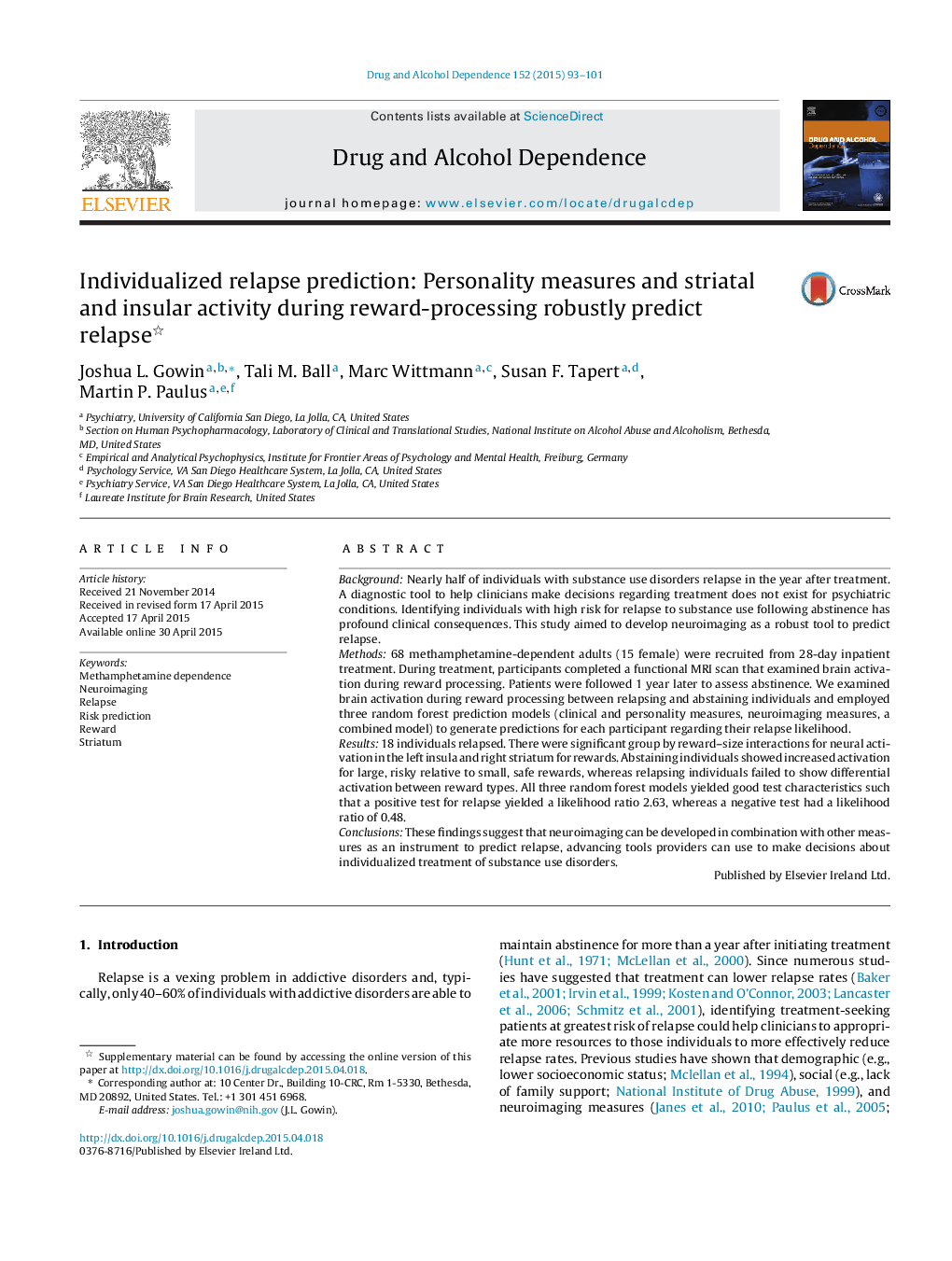| کد مقاله | کد نشریه | سال انتشار | مقاله انگلیسی | نسخه تمام متن |
|---|---|---|---|---|
| 1069774 | 1486139 | 2015 | 9 صفحه PDF | دانلود رایگان |
• We did fMRI on abstinent methamphetamine-dependent individuals and determined who relapsed.
• We used a robust classification technique called random forest to generate individual-level predictions.
• The random forest model was consistent with a standard linear model.
• Our models performed well, with specificity, sensitivity and ROC AUC around 0.7.
• Our results suggest that neuroimaging can be developed to predict individual clinical outcomes.
BackgroundNearly half of individuals with substance use disorders relapse in the year after treatment. A diagnostic tool to help clinicians make decisions regarding treatment does not exist for psychiatric conditions. Identifying individuals with high risk for relapse to substance use following abstinence has profound clinical consequences. This study aimed to develop neuroimaging as a robust tool to predict relapse.Methods68 methamphetamine-dependent adults (15 female) were recruited from 28-day inpatient treatment. During treatment, participants completed a functional MRI scan that examined brain activation during reward processing. Patients were followed 1 year later to assess abstinence. We examined brain activation during reward processing between relapsing and abstaining individuals and employed three random forest prediction models (clinical and personality measures, neuroimaging measures, a combined model) to generate predictions for each participant regarding their relapse likelihood.Results18 individuals relapsed. There were significant group by reward–size interactions for neural activation in the left insula and right striatum for rewards. Abstaining individuals showed increased activation for large, risky relative to small, safe rewards, whereas relapsing individuals failed to show differential activation between reward types. All three random forest models yielded good test characteristics such that a positive test for relapse yielded a likelihood ratio 2.63, whereas a negative test had a likelihood ratio of 0.48.ConclusionsThese findings suggest that neuroimaging can be developed in combination with other measures as an instrument to predict relapse, advancing tools providers can use to make decisions about individualized treatment of substance use disorders.
Journal: Drug and Alcohol Dependence - Volume 152, 1 July 2015, Pages 93–101
